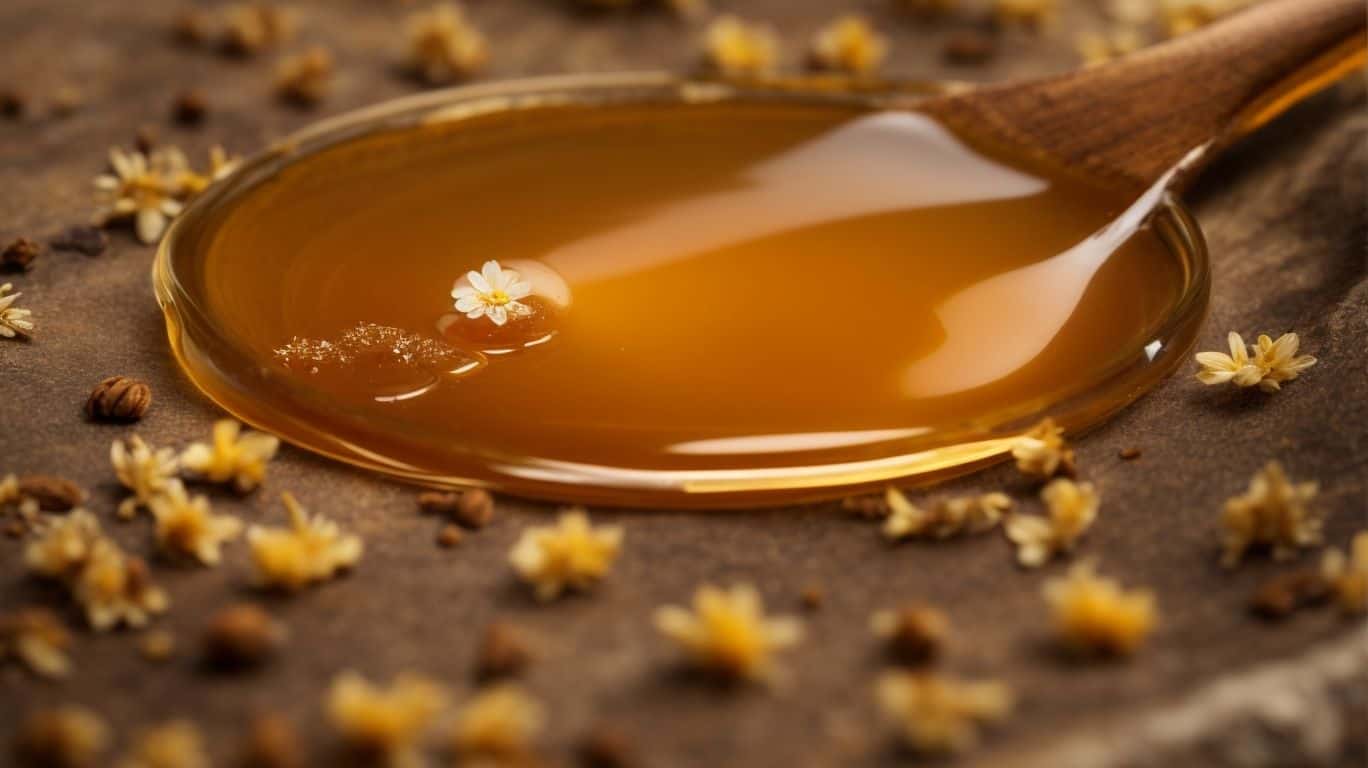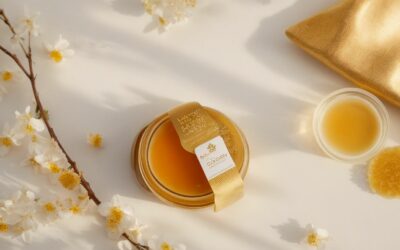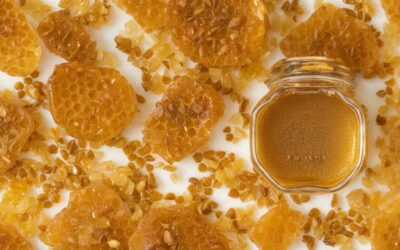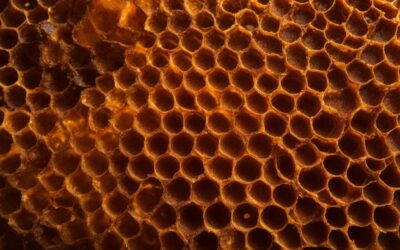Welcome to the world of Manuka honey wound care. Did you know that this unique type of honey is clinically proven to have powerful healing properties?
If you’re struggling with hard-to-heal wounds, Manuka honey may be the solution you’ve been searching for. Discover its benefits with us.
How is Manuka Honey Used in Wound Care?
Using Manuka honey in wound care involves a series of steps to ensure proper application and effectiveness.
- Clean the wound thoroughly with mild soap and water.
- Gently pat the wound dry with a clean towel.
- Apply a thin layer of Manuka honey directly to the wound, ensuring full coverage.
- Cover the wound with a sterile bandage or dressing to protect it from external contaminants.
- Change the dressing and reapply the Manuka honey at least once a day or as directed by a healthcare professional.
- Monitor the healing process and consult a healthcare professional if there are any signs of infection or if the wound does not improve.
Manuka honey has been utilized for centuries by indigenous cultures in New Zealand for its medicinal properties.
Its use in wound care has gained popularity due to its antibacterial and anti-inflammatory properties, which aid in healing and preventing infection.
Today, Manuka honey is widely recognized for its effectiveness in managing wounds and is utilized in both medical settings and by individuals at home.
What Types of Wounds Can Manuka Honey Be Used For?
Manuka honey is known for its antibacterial and wound-healing properties, making it suitable for various types of wounds.
It is commonly used for superficial wounds such as cuts, scrapes, and abrasions, thanks to its ability to create a moist environment and promote tissue regeneration.
Additionally, it is effective in treating first-degree burns due to its ability to promote healing and prevent infection.
Manuka honey can also be used for surgical wounds, pressure sores, and diabetic ulcers, thanks to its antimicrobial activity.
However, it is always advisable to consult a medical professional for proper guidance on using manuka honey for specific wound types to ensure appropriate care and treatment.
What Makes Manuka Honey Effective for Wound Healing?
The effectiveness of Manuka honey for wound healing can be attributed to its unique properties and components.
Its high concentration of methylglyoxal (MGO) provides strong antibacterial properties, inhibiting the growth of bacteria in wounds.
Furthermore, Manuka honey creates a moist environment that aids in wound healing and prevents scab formation. Its anti-inflammatory properties also help reduce swelling and pain.
Moreover, Manuka honey stimulates the growth of new tissue and speeds up wound closure. With all these benefits combined, Manuka honey is a natural and effective option for wound care.
What are the Active Ingredients in Manuka Honey?
Manuka honey is known for its healing properties due to its various active ingredients. These include methylglyoxal (MGO), hydrogen peroxide, and dihydroxyacetone (DHA).
MGO is the main component responsible for the unique antibacterial activity of Manuka honey, effectively killing harmful bacteria and preventing infections.
Hydrogen peroxide also possesses antibacterial properties and aids in cleansing wounds.
DHA, on the other hand, gradually converts to MGO, further enhancing the honey’s potency. Together, these active ingredients work in synergy to promote wound healing and reduce inflammation.
When choosing Manuka honey for wound care, it is important to look for a high UMF or MGO rating to ensure the presence of these beneficial compounds. It is always advisable to seek advice from a medical professional for proper wound care.
How Does Manuka Honey Help with Wound Healing?
Manuka honey is known for its unique properties and active ingredients that aid in wound healing. Here are the steps that demonstrate how manuka honey helps with this process:
- Step 1: Antibacterial action: The high sugar content and low pH of manuka honey create an environment where bacteria struggle to survive, promoting healing.
- Step 2: Moisture retention: Manuka honey forms a protective barrier over the wound, preventing it from drying out and promoting a moist environment for healing.
- Step 3: Anti-inflammatory effects: This honey reduces inflammation, swelling, and pain, which helps to speed up the healing process.
- Step 4: Stimulation of tissue regeneration: The bioactive compounds in manuka honey stimulate cell growth and collagen formation, aiding in the regeneration of new tissue.
- Step 5: Minimization of scarring: By supporting the formation of healthy, new skin tissue, manuka honey can help minimize scarring.
These combined actions make manuka honey a highly effective natural remedy for wound healing.
How to Use Manuka Honey for Wound Care?
When it comes to wound care, manuka honey has gained popularity for its natural healing properties. But how exactly should one use manuka honey for wound care?
In this section, we will discuss the best practices for utilizing manuka honey to treat wounds. From cleaning the wound to changing the dressing, each step plays a crucial role in promoting healing.
So, let’s dive into the specifics of how to properly use manuka honey for wound care.
Step 1: Clean the Wound
To properly clean a wound, follow these steps:
- Gently rinse the wound with clean water to remove any dirt or debris.
- Use mild soap or a saline solution to cleanse the wound, making sure to avoid harsh chemicals.
- Gently pat the wound dry with a clean, sterile cloth or towel.
- If necessary, apply an antiseptic solution or ointment to prevent infection.
- Cover the wound with a sterile dressing or bandage to protect it from further contamination.
Pro-tip: Avoid using hydrogen peroxide or alcohol to clean the wound, as they can damage healthy tissues and delay healing.
Step 2: Apply the Manuka Honey
Applying manuka honey to wounds involves several steps that promote healing and prevent infection.
- Clean the wound thoroughly with mild soap and water.
- Gently pat the wound dry with a clean towel or sterile gauze.
- Using a clean spoon or spatula, scoop out a small amount of manuka honey.
- Step 2: Apply a thin layer of honey directly onto the wound, ensuring it covers the entire surface.
- For deeper wounds, consider using a sterile dressing or gauze pad to keep the honey in place.
- Secure the dressing with medical tape or a bandage.
- Change the dressing and reapply the honey daily or as directed by a healthcare professional.
Step 3: Cover the Wound
Step 3: Covering the wound is an essential part of using Manuka honey in wound care. Here are the steps to properly cover the wound:
- Clean the wound thoroughly using a mild antiseptic solution or saline.
- Gently pat the wound dry using a sterile gauze or clean towel.
- Apply a thin layer of Manuka honey directly onto the wound, ensuring complete coverage.
- Choose an appropriate dressing, such as a non-adherent or hydrogel dressing, to cover the wound and protect it from external contaminants.
- Secure the dressing in place using medical tape or a bandage.
- Change the dressing regularly, following healthcare professional recommendations, to maintain a moist and clean wound environment.
Ensuring proper wound coverage with Manuka honey promotes a moist wound environment and helps facilitate the healing process.
Step 4: Change the Dressing
To properly change the dressing when using Manuka honey for wound care, follow these steps:
- Clean the wound: Gently cleanse the wound with mild soap and water, or a saline solution.
- Apply the Manuka honey: Spread a thin layer of Manuka honey over the wound, ensuring full coverage.
- Cover the wound: Place a sterile dressing, such as a non-adherent pad, over the honey-coated wound.
- Change the dressing: Depending on the severity of the wound and the healing progress, change the dressing and reapply the Manuka honey every 1 to 3 days, or as advised by a healthcare professional.
Regularly changing the dressing and reapplying Manuka honey helps maintain a clean and moist wound environment, promoting the healing process. Remember to consult a medical professional for personalized wound care advice.
What are the Best Practices for Using Manuka Honey in Wound Care?
Manuka honey has been used for centuries as a natural remedy for wound care. However, with the rise in popularity, it is important to understand the best practices for using manuka honey in wound care.
In this section, we will discuss four key practices that can maximize the effectiveness of manuka honey in healing wounds. From choosing the right type of honey to consulting a medical professional, each practice plays a crucial role in the proper use of manuka honey for wound care.
1. Choose the Right Type of Manuka Honey
Choosing the right type of Manuka honey is crucial for effective wound care.
- Check the UMF or MGO rating to ensure authenticity and quality.
- Consider the Unique Manuka Factor (UMF) rating, which indicates the antibacterial potency.
- Look for a UMF rating of 10+ or higher for wound healing purposes.
- Alternatively, check the Methylglyoxal (MGO) rating, which measures the level of antibacterial activity.
- For wound care, select Manuka honey with an MGO rating of at least 250+.
Fact: The higher the UMF or MGO rating, the greater the antibacterial properties of the Manuka honey, making it more effective in promoting wound healing.
2. Check the UMF or MGO Rating
When using Manuka honey for wound care, it is important to check the UMF or MGO rating to ensure its effectiveness:
- Look for either UMF (Unique Manuka Factor) or MGO (Methylglyoxal) ratings on the packaging of the honey.
- The UMF rating should be at least 10+ or the MGO rating should be at least 100+ in order to indicate its potency.
- A higher UMF or MGO rating indicates a higher level of beneficial compounds in the honey.
Remember to consult a medical professional for guidance on selecting the appropriate rating for your specific wound care needs.
3. Follow Proper Wound Care Techniques
Following proper wound care techniques is essential when utilizing Manuka honey for wound healing. Here are the steps to follow:
- Clean the wound gently with mild soap and water
- Apply a thin layer of Manuka honey to the wound, covering the entire area
- Cover the wound with a sterile dressing to protect it from external contaminants
- Change the dressing regularly, at least once a day or as directed by a healthcare professional
By following these steps, you can ensure that the wound is clean, protected, and given the best chance to heal properly.
The use of honey for wound healing dates back centuries. Ancient Egyptians and Greeks recognized its antimicrobial properties and used it to treat wounds. Today, Manuka honey, with its unique healing properties, continues to be a valuable tool in wound care.
4. Consult a Medical Professional
When using Manuka honey for wound care, it is crucial to seek guidance and supervision from a medical professional. Here are the steps to follow when consulting a healthcare provider:
- Schedule an appointment with a healthcare provider.
- Discuss the wound and provide relevant medical history.
- Share any allergies or sensitivities.
- Ask about the suitability of Manuka honey for your specific wound.
- Inquire about the recommended application method and frequency.
- Seek clarification on any doubts or questions you may have.
- Follow the instructions and recommendations of the medical professional for proper wound care.
By consulting a medical professional, you can ensure the safe and effective use of Manuka honey for your wound healing journey.
Are There Any Side Effects of Using Manuka Honey in Wound Care?
While manuka honey has gained popularity for its effectiveness in wound healing, it is important to also consider the potential side effects of using this natural remedy. In this section, we will discuss the possible allergic reactions that may occur from using manuka honey in wound care.
We will also explore the potential for delayed healing and the risk of contamination when using this type of honey on wounds. It is crucial to understand these potential side effects in order to make informed decisions about incorporating manuka honey into wound care practices.
1. Allergic Reactions
Allergic reactions to Manuka honey in wound care are uncommon but possible. If you experience any adverse reactions, stop using it immediately and seek medical attention.
Here are the steps to follow if you suspect an allergic reaction:
- Identify symptoms such as a rash, itching, swelling, or difficulty breathing.
- Remove the dressing and clean the affected area with mild soap and water.
- Apply an over-the-counter anti-itch cream or take an antihistamine if recommended by a healthcare professional.
- Contact your doctor or allergist for further evaluation and guidance.
True story: A friend of mine used Manuka honey for wound healing, but unfortunately developed an allergic reaction. They promptly removed the honey, cleaned the wound, and sought medical advice.
It’s important to prioritize your health and consult a professional if you experience any unexpected reactions.
2. Delayed Healing
Delayed healing is a potential concern when using Manuka honey for wound care. To optimize the healing process, follow these steps:
- Ensure the wound is properly cleaned and free from debris.
- Gently apply a thin layer of Manuka honey to the wound bed, covering the entire area.
- Use a sterile dressing to cover the wound and keep it protected.
- Regularly change the dressing and reapply Manuka honey to maintain a moist wound environment.
To avoid delayed healing:
- Choose high-quality Manuka honey with a high UMF or MGO rating.
- Follow proper wound care techniques, such as avoiding excessive moisture and keeping the wound clean.
- Consult a medical professional for guidance and monitoring of the wound healing progress.
By following these steps and taking necessary precautions, the risk of delayed healing can be minimized, allowing Manuka honey to fully support the wound healing process.
3. Contamination
Contamination is an important factor to consider when using Manuka honey for wound care. To ensure safety and effectiveness, it is crucial to follow these steps:
- Choose a high-quality, sterile brand of Manuka honey.
- Thoroughly clean the wound with mild soap and water.
- Apply a thin layer of Manuka honey to the wound using a sterile applicator.
- Cover the wound with a sterile dressing or bandage.
- Regularly change the dressing, at least once a day or as instructed by a healthcare professional.
A friend of mine had a deep cut that became infected. After trying various treatments, they decided to use Manuka honey.
By strictly following measures to prevent contamination, the wound healed remarkably well without any infection or complications. Manuka honey proved to be a safe and effective option for their wound care.
Frequently Asked Questions
What is Manuka Honey Wound Care?
Manuka Honey Wound Care is a natural and effective method of treating wounds, cuts, and burns using Manuka honey as a healing agent. It is a traditional practice that has gained popularity due to the unique properties of Manuka honey.
What makes Manuka Honey ideal for wound care?
Manuka Honey contains a high concentration of antibacterial and anti-inflammatory properties, making it an excellent option for wound care. It also has a low pH level, creating an acidic environment that prevents bacterial growth and promotes healing.
How do I use Manuka Honey for wound care?
To use Manuka Honey for wound care, first, clean the affected area with mild soap and water. Then, apply a thin layer of Manuka Honey on the wound and cover it with a sterile bandage. Change the bandage and reapply the honey every 24 hours until the wound heals.
What types of wounds can Manuka Honey be used on?
Manuka Honey can be used on various types of wounds, including burns, cuts, ulcers, surgical wounds, and even chronic wounds that are difficult to heal. It is safe to use on both acute and chronic wounds.
Are there any precautions to take when using Manuka Honey for wound care?
While Manuka Honey is generally safe, there are a few precautions to consider. It is not recommended for people with bee allergies. Additionally, it is important to use medical-grade Manuka Honey with a Unique Manuka Factor (UMF) of 10 or above for optimal healing.
What are some best practices for using Manuka Honey for wound care?
Some best practices for using Manuka Honey for wound care include ensuring the honey is pure and medical-grade, keeping the wound clean and covered, and consulting a healthcare professional for severe or infected wounds. It is also essential to follow the recommended dosage and frequency of application.
I’m a Manuka honey enthusiast and creator of Manuka Honey Organic, a blog where I share my journey with authentic Manuka honey from New Zealand. I want everyone to learn about the healing powers of Manuka honey.





